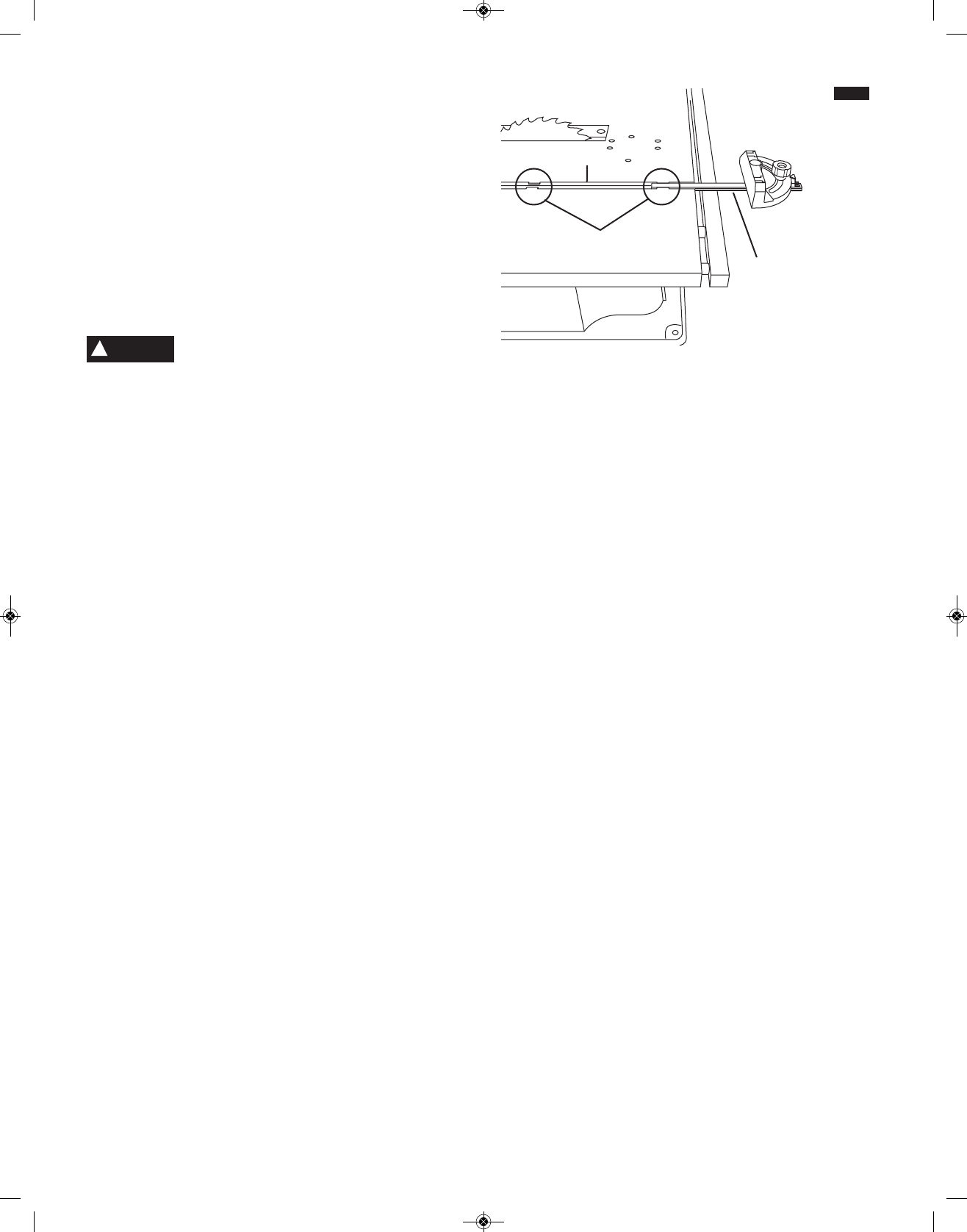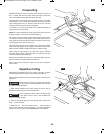
54.
Using the Miter Gauge with “T” Bar
The miter gauge is equipped with a “T” shaped bar 1 which
e
ngages under retaining tabs 2 in the table’s miter gauge slots 3
(Fig. 34).
The tabs keep the miter gauge in the slot and will support it when
pulled beyond the front of table as shown in figure 34. When using
the miter gauge for 90° cross-cuts, the maximum cut capacity is
11-1/2 inches for up to 2 x 12 lumber (actual width= 11-1/4 inches).
The bar must be engaged under slot tabs before attempting any
cutting operation using the miter gauge.
CROSSCUTTING, MITER CUTTING, BEVEL CUTTING, COM -
POUND MITER CUTTING and when RABBETING across the end
o
f a narrow workpiece, the MITER GAUGE is used.
For your own safety, always observe the following
safety precautions in addition to the safety
i
nstructions on Pages 2-6.
• Never make these cuts freehand (without using the miter gauge
or other auxiliary devices) because the blade could bind in the cut
and cause a KICKBACK or cause your fingers or hand to slip into
the blade.
• Always tighten the miter gauge handle securely when in use.
• Remove rip fence from table during any operations which utilize
the miter gauge.
• When cross cutting and the blade set at 90º to the table, the miter
gauge can be used in either slot on the table. When cross cutting
and the blade is tilted, use slot on right side of table where the
blade is tilted away from your hands and miter gauge.
• Make sure blade guard is installed for all “thru-sawing” operations
(when sawblade cuts entirely thru the thickness of the workpiece).
Replace guard IMMEDIATELY after com pletion of dadoing,
molding or rabbeting cuts.
• Have blade extend approximately 1/8" above top of work piece.
Additional blade exposure would increase the hazard potential.
• Do not stand directly in front of the blade in case of a
THROWBACK (small cut-off piece caught by the back of the blade
and thrown toward the operator). Stand to either side of the blade.
• Keep your hands clear of the blade and out of the path of the
blade.
• If blade stalls or stops while cutting, TURN SWITCH OFF before
attempting to free the blade.
• Do not reach over or behind the blade to pull the work piece
through the cut … to support long or heavy workpieces … to
remove cut-off pieces of material or FOR ANY OTHER REASON.
• Do not pick up small pieces of cut-off material from the table.
REMOVE them by pushing them OFF the table with a long stick.
Otherwise they could be thrown back at you by the rear of the
blade.
• Do not remove small pieces of cut-off material that may become
TRAPPED inside the blade guard while the saw is RUNNING.
THIS COULD ENDANGER YOUR HANDS or cause a KICKBACK.
Turn the saw OFF. After the blade has stopped turning, lift the
guard and remove the piece.
• If workpiece is warped, place the CONCAVE side DOWN. This
will prevent it from rocking while it is being cut.
FIG. 34
1
2
3
WARNING
!
SM 2610008289 02-10:3310 Table Saw 2/2/10 8:38 AM Page 54


















